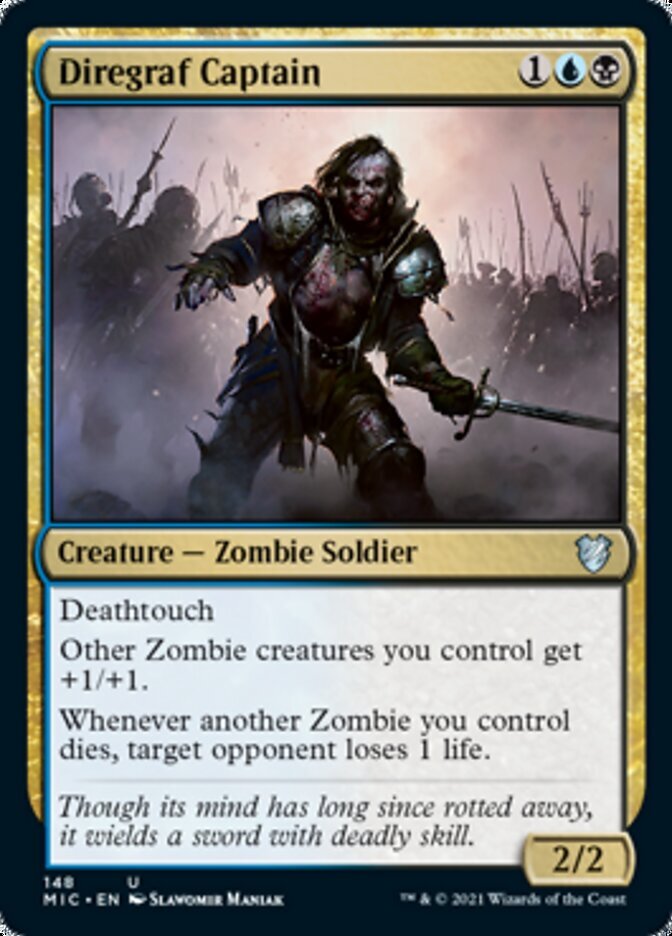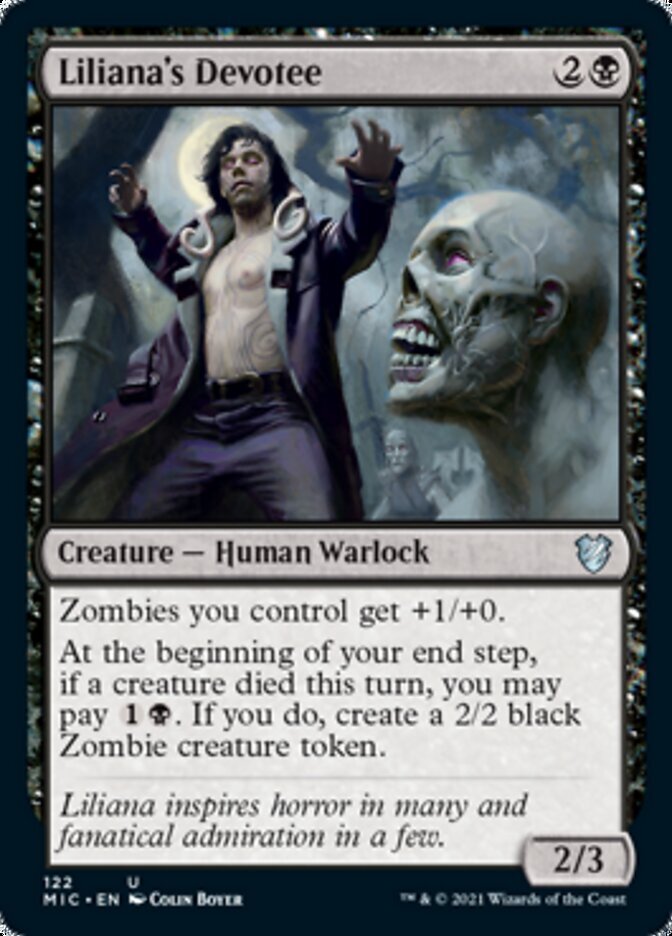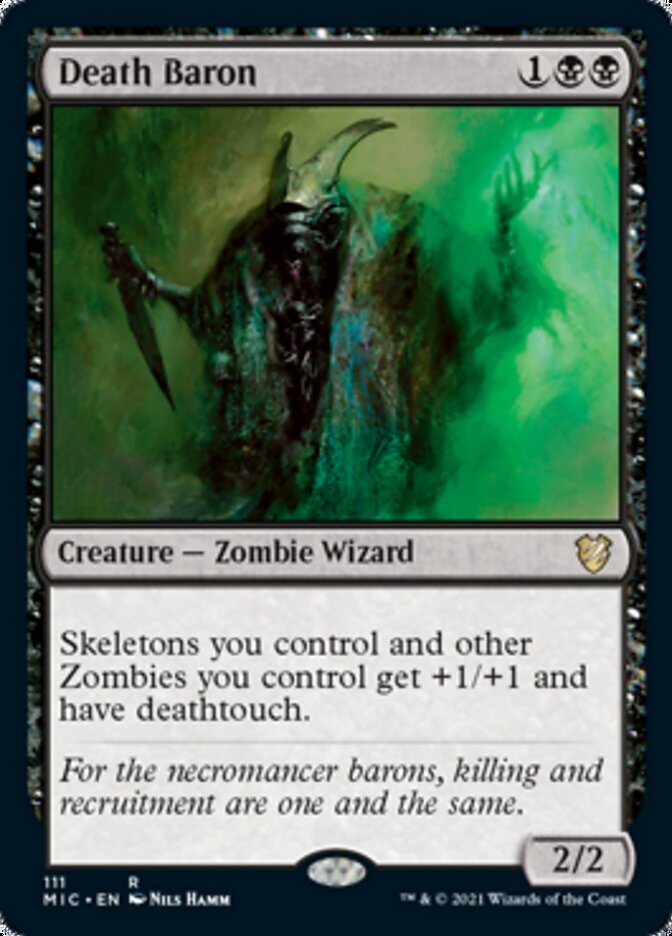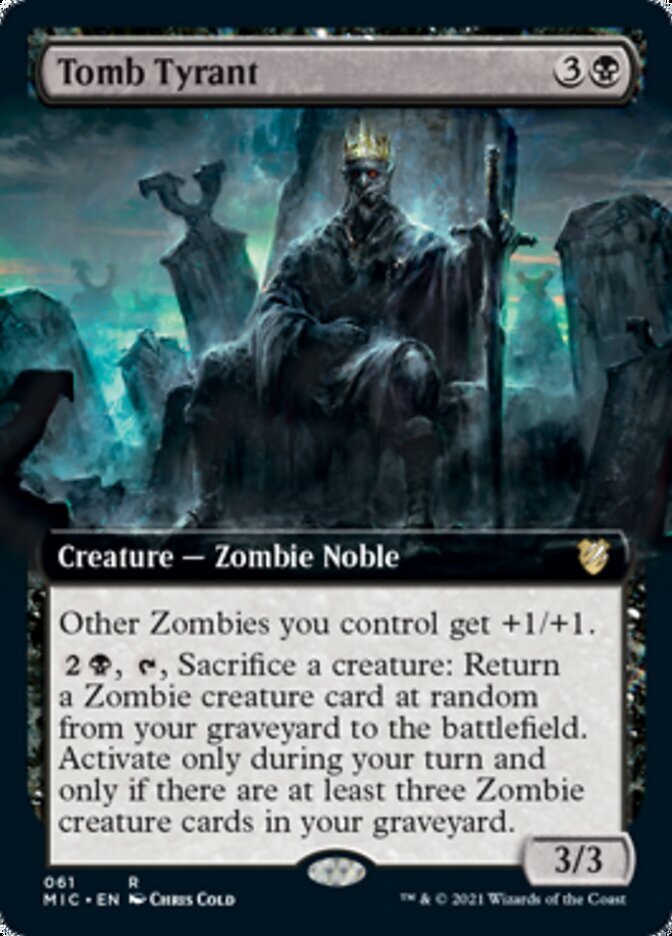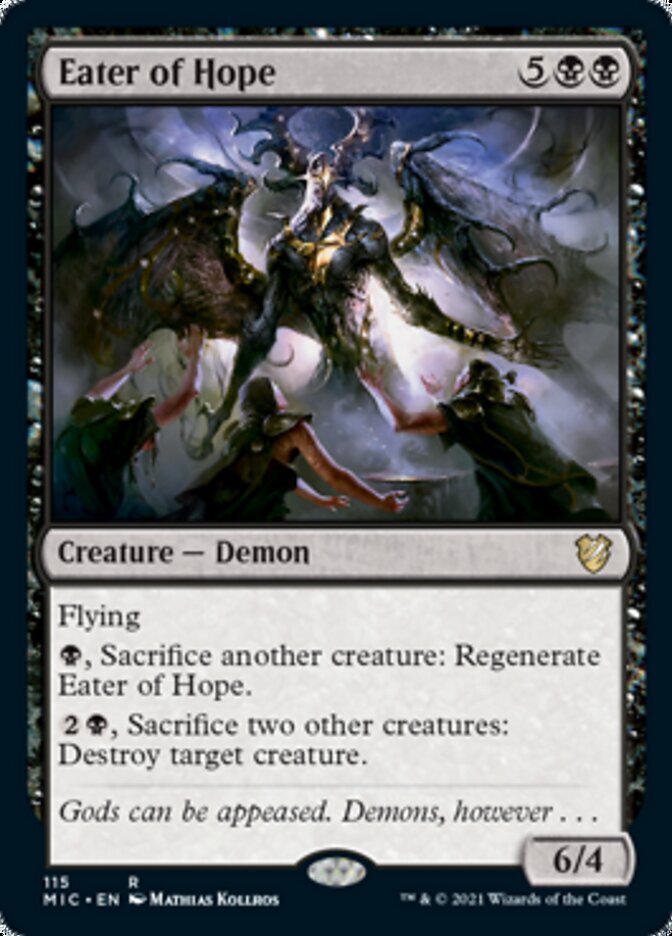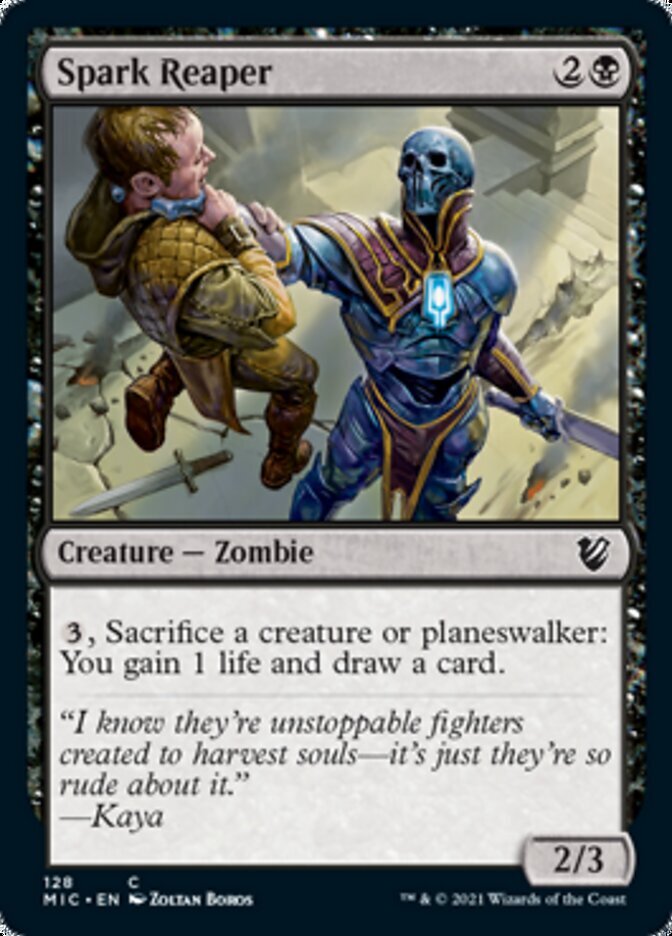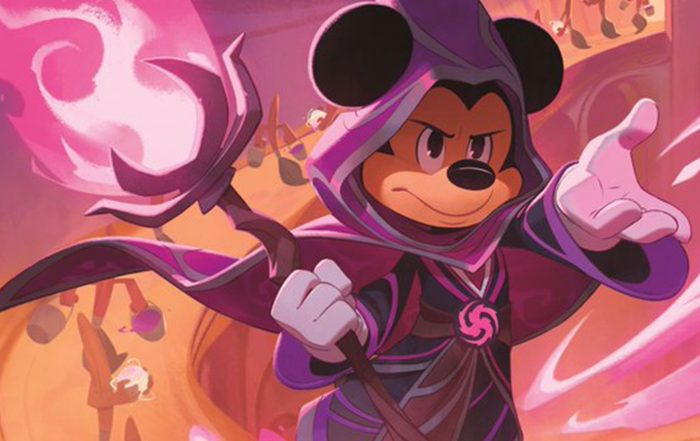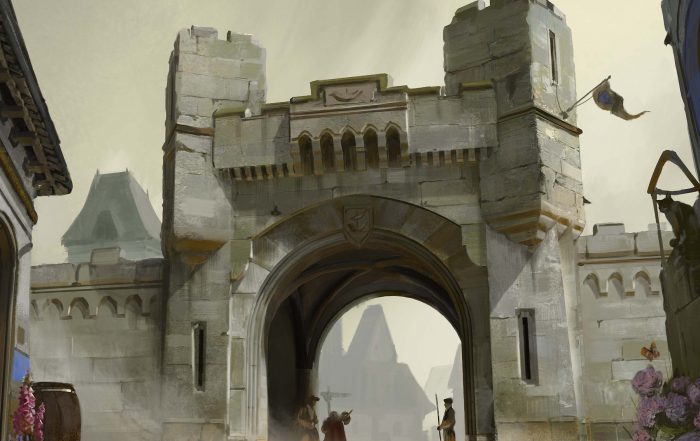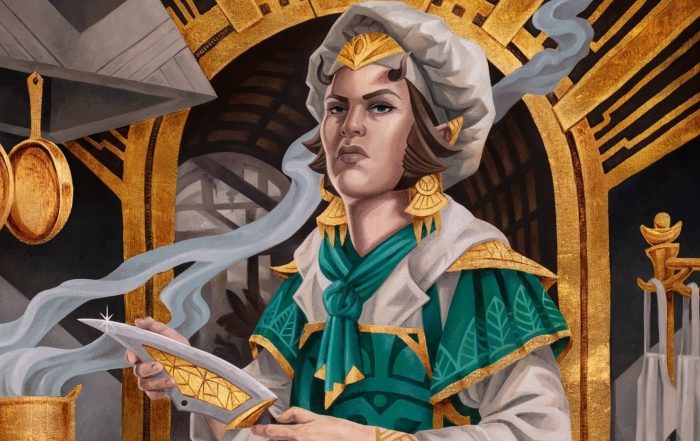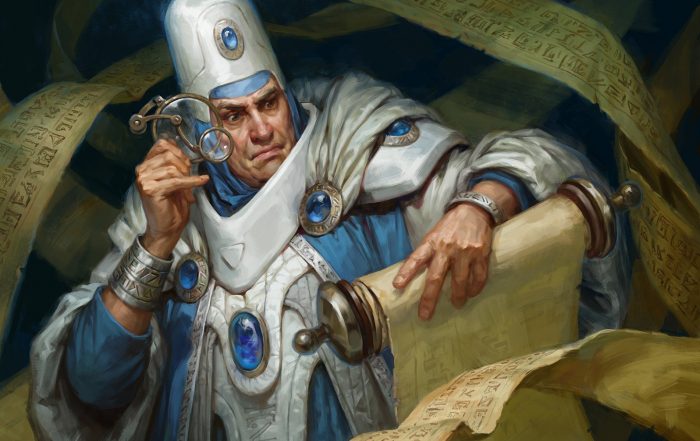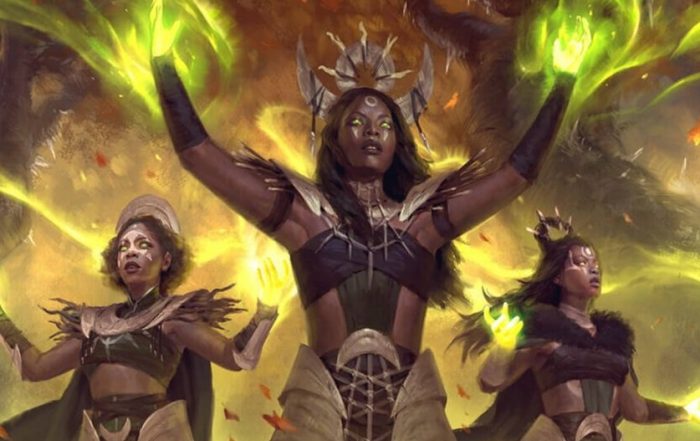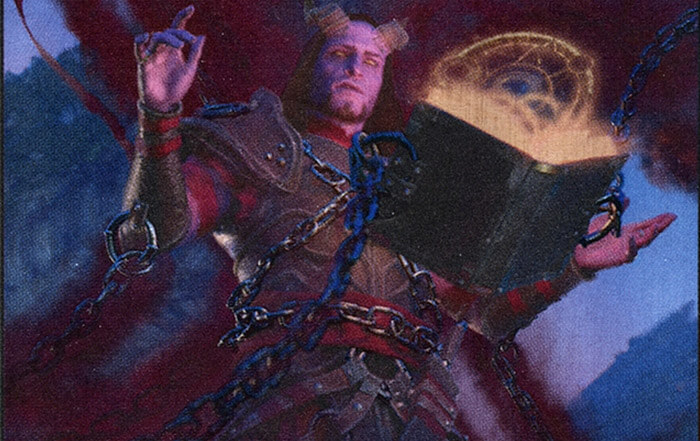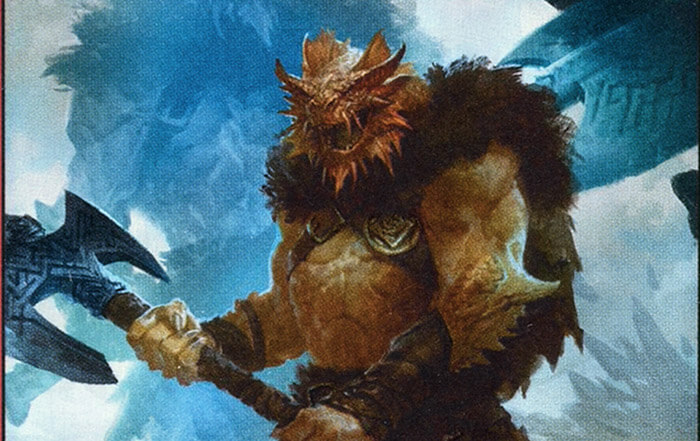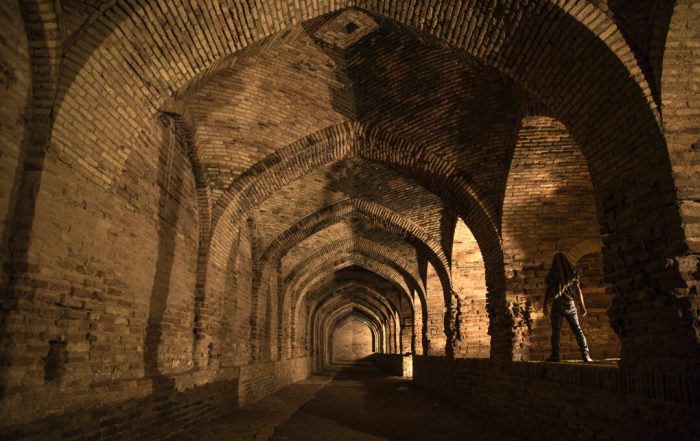Review Innistrad: Midnight Hunt Commander Deck – Part 1
Undead Unleashed
Commander Deck Innistrad Midnight Hunt – Part 1
Author: David Merker-Schwendinger
Since my first attempts at Magic, zombies have remained one of my favorite creature types.
So, I was delighted when Innistrad: Midnight Hunt, a zombie-themed Commander deck, was announced. Let’s take a look at what has risen from the graves before us.
You can buy the Innistrad Midnight Hunt Commander Deck “Undead Unleashed” here!
In addition to various reprints (including Death Baron, Diregraf Colossus, or Endless Ranks of the Dead), fourteen new cards (fifteen if you include the Main Commander) await us in the deck, which can complement your own decks well:
The Commanders
Commander 1
The first Commander the deck has in store for us is Wilhelt, the Rotcleaver. This 3/3 Zombie Warrior for 2BlBk (we use Bl for Blue and Bk for Black now) gives us the option to sacrifice a Zombie to draw a card.
Another passive ability of Wilhelt’s creates a 2/2 Zombie creature token with Decayed whenever another player-controlled Zombie without this trait dies.
Commander 2
The second commander option is the newly released Eloise, Nephalia Sleuth, a human rogue for 3BlBk.
She offers us two abilities that are linked like Wilhelt: when a controlled creature dies, create a Clue-Token and use Surveil 1 when sacrificing a token.
A nice combination can be achieved with Ashnod’s Altar to quickly generate tokens and mana, also in combination with Dictate of Erebos. In the back of your mind, you can also keep the recently released Academy Manufactor.
Commander 3
There is also a third card in the deck, which we could play as Commander: Gisa and Geralf, 2BlBk. As soon as it comes into play, you mill four cards and may cast zombie creatures from your graveyard during your own turn.
It quickly becomes apparent which direction the deck is heading: sacrifice to rule. Use death and destruction to grow.
Creatures – The graves are emptying
To be able to fulfill this intention, we need a broad spectrum of creatures, which the deck offers to us. Besides the three commander creatures, there are 30 other creature cards in the deck.
Pump it up!
To strengthen the combat power of the undead, there are six creatures in the deck that give zombies +1/+1 or +1/+0: Diregraf Captain, Lord of the Accursed, Liliana’s Devotee, Death Baron, Cementary Reaper, and Tomb Tyrant.
The Reaper and Devotee each offer us the ability to generate new zombies. The former can remove a creature card from any graveyard for 2Bk + tap to create a 2/2 zombie. The Devotee’s ability, on the other hand, is passive, occurring at the end of its own end step when a creature has died.
Passive damage
A passive damage output to an opponent is the Diregraf Captain, which deals a point of damage whenever a controlled zombie dies, similar to the also included Undead Augur. The Tomb Tyrant replenishes the ranks on the field.
For 2Bk, a creature can be sacrificed to bring a random Zombie card back into play from the graveyard, in my opinion, one of the best cards of the deck due to the two combined abilities.
Liliana Baby!
Often overlooked, Liliana, Death’s Majesty helps the player to fill the graveyard with milled cards to put on the field later, and can quickly create zombies to control the battlefield.
Up the pressure
To force the opponent’s hand and thin the ranks of their field, the deck uses Ruthless Deathfang and Butcher of Malakir. Both trigger when one of the own creatures dies.
Deathfang refers to the sacrifice, the Butcher to the general death of a creature. In some trial games, it was possible to get several opponent’s creatures off the field in one turn in combination with Wilhelt.
Sac Sac Sac
To drive the sacrifice mechanic, you can use Eater of Hope, Spark Reaper, Ravenous Rotbelly, and Cleaver Skaab.
- The Eater can be regenerated by a sacrifice on the one hand, on the other hand, it can destroy a target creature with 2Bk and two other sacrificed creatures.
- The Ravenous Rotbelly can sacrifice up to three Zombies as soon as it is put into play, for which each opponent has to sacrifice the same number of creatures – since there is no actual Boardwhipe in the deck, this can reset the game.
- The Cleaver Skaab, on the other hand, brings strategic aspects into play, as it creates two duplicates of the same Zombie for three colorless mana and a sacrificed Zombie. Considering that there are now 500+ printed Zombies, countless possibilities exist in custom decks. In the right combination, it holds a destructive power that can tip the game in favor of the controlling player, depending on whether the player wants two tokens or make their creatures more powerful – or force their opponents to sacrifice creatures.
The undead rest of the bunch
The rest of the deck’s creature cards provide varying effects, such as flying ability for Zombies, Gleaming Overseer can protect your board from destruction as it provides Zombies Hexproof and Menace.
Besides Gisa and Geralf, Stitcher Geralf and Undead Alchemist offer further mill abilities.
- Stitcher Geralf lets each player mill three cards for 2Bl, after which up to two creature cards that would be put into a graveyard this way can be removed from play and an X/X blue Zombie can be created, where X is the summed power of the exiled cards.
- The Alchemist quickly decimates enemy libraries if the undead hordes’ attacks are not prevented, as friendly zombies can now mill cards instead of inflicting damage. For every creature card put into a graveyard this way, a 2/2 black Zombietoken comes into play.
Another creature worth mentioning is Gorex, the Tombshell. To play this undead turtle, any number of creature cards from your graveyard is removed from play. As soon as Gorex attacks or dies, one of the cards removed from play can be returned to the owner’s hand. In trial games against decks that exile graveyards, creatures that have already been destroyed could be tactically cleverly played to protect them.
On the other hand, if you are targeting and controlling an opponent’s graveyard yourself, Havengul Runebinder is of use, which can remove creature cards from any graveyard for 2Bl to create a 2/2 Zombie token and put a +1/+1 token on each Zombie controlled.
Gravespawn Sovereign, which can put creatures into play from a graveyard under your control, serves a similar purpose, as does Shadow Kin.
This lets all players mill three cards at the start of each upkeep, one of which can be removed from play, after which the Kin becomes a copy of that card.
Enchantments
There are seven enchantments in the deck that are tuned to the zombie mechanic.
- Open the Graves is most useful, as it creates a 2/2 zombie for each (own) creature that dies.
- This goes hand in hand with Endless Ranks of the Dead, which creates X Zombie tokens each turn at the start of its own upkeep, where X is half of the Zombies controlled.
- Liliana not only gives the deck her strength as a planeswalker but also an enchantment that buffs our zombies with +1/+1.
- When playing against a deck that relies on a landfall mechanic, you can quickly create tokens with Curse of the Restless Dead. For every land that comes into play under your opponent’s control, you put a 2/2 Zombie creature into play with Decayed.
- The most valuable card for me in tryouts was Rooftop Storm, which allows you to play Zombie creatures for 0 mana. This allowed creatures to be played quickly and cheaply, while using the mana saved to keep the board under control with other spells.
- Curse of Unbinding is an expensive enchantment for 6Bl, but it has decent utility. Cast as a curse on an opposing player, they reveal cards from their deck at the start of their upkeep until a creature is flipped over. It is then put into play under your own control. If the Curse stays in play long enough, or luck plays a part, opposing creature combos can be stopped before they even come into play or trigger. For example, if you already have a Curse-based deck with Lynde, Cheerful Tormentor, both are welcome cards.
The Spells
Thirteen Instants and Sorceries offer us a choice of courses of action.
Seek and Destroy
Two cards, Go for the Throat and Feed the Swarm offers us the direct possibility of destroying an enemy creature, whereby the latter can also destroy enchantments.
To destroy a single creature and bring additional tokens into play, Dark Salvation serves.
We are in the army now
- One of the most iconic cards for zombie decks, Army of the Damned, can’t be missing in the deck, of course, and provides us with numerous zombies.
- A nice fluff is offered by Zombie Apocalypse, which can provide us with a large number of zombies in the late game that are already in the graveyard.
- In the earlier or later game before (or after) some board wipes, you will have enough tokens to use as a base for other cards. As an example, Empty the Laboratory uses sacrificed Zombies to put undead creatures revealed directly from the library into play.
Extra Cards? Yes, please!
Distant Melody and Drown in Dreams are the only spell cards in the deck that let the player draw cards.
With the latter, if you still control the commander, another player mills additional cards. Compared to cards like Blue Sun’s Zenith or Stroke of Genius, this is a good alternative in the Commander format.
The only sort-of boardwipe card that can be seen is Aetherspouts, which does not destroy creatures but puts them on the library of their controller. With the millability of other cards like Dread Summons or Gisa and Geralf, a strong combo can be created to destroy creatures indirectly. Once many creatures have landed in the graveyards, Ghouls’ Night Out helps to bend them to your will.
Artifacts
All the seven artifacts included in the deck are used for mana generation, only the Crowded Crypt has an additional use, it collects corpse-counters that can be used for the creation of zombies.
This can quickly replace the lost creatures after a boardwipe if it is disregarded by the opponent.
The Verdict
After some Commander decks were already published as so-called Lite or Intro decks in earlier editions, e.g., Kaldheim, it is clear in comparison that Undead Unleashed is a Full Version deck, which can keep up with self-made decks in terms of its power level, but is slower to build up.
The forty lands and seven artifacts included in the deck give us a good base to cast spells and creatures that will quickly put pressure on the opponent. The sheer amount of tokens, which multiply quickly, underlines the aggressive, attack-focused strategy of the deck.
33 creature cards seem very generous at first, in terms of sacrificing and killing your own non-token creatures, this amount seems tight at some points, but this is compensated by the many tokens. The enchantments mainly help us generate these tokens.
My verdict: “An all-round successful full version deck”
Personally, I could see cards like the Undead Warchief, Dictate of Erebos, Grave Pact or Blood Artist doing well in the deck, allowing for another buff to the Zombies and Sacrifice mechanics.
Compared to the preceding Forgotten Realm commander decks, Undead Unleashed can stand its ground and hold its own well against decks that are not preconstructed.
You can buy the Innistrad Midnight Hunt Commander Deck “Undead Unleashed” here!
About the Author
David Merker-Schwendinger started playing Magic: The Gathering as a teenager. His first Deck was a Mirrodin Preconstructed Deck.
Over the years, he developed an interest in role-playing games, which was sparked during his Archeological studies at university.
The Magic card collection kept growing during his Master studies of Austrian history. Some topics he studied, like heraldic, came in handy for his role-playing storytelling.
He is the host of a YouTube channel (NerdNavigator) where he features the Austrian D&D community and Dungeons’ and Dragons in general.
Booster Drafting with friends and exploring Ravnica with his Dungeon and Dragons party are among his favorite things to do in his free time.

All Articles by David Merker-Schwendinger
How To Play Disney Lorcana
Here's everything you need to know about the gameplay of the new card game Disney Lorcana. In our latest article, David explains to you everything you need to know about Ink, Glimmer, turn structure, card types and anything else surrounding the gameplay of Lorcana.
Commander Legends 2 – Battle for Baldur’s Gate
Commander Legends 2: Battle for Baldur's Gate released a few weeks ago. Our author David takes a closer look at the set and tells us about what Beasts, Dragons and other mythical creatures he is really excited about!
Streets of New Capenna: The Most Powerful Commanders
Streets of New Capenna is out right now and with it come a few really strong Commanders! In this blog entry, we are going to present you the most powerful Commanders from Streets of New Commander. Maybe you get to play some of them before they eventually get banned?
The Best Underrated & Most Overrated Commanders
In today’s article, David is taking a closer look at the Commander table and filters through different choices for the top leaders of current decks. If you’re interested in getting to know his picks for the best underrated and the most overrated Commanders in Magic: The Gathering, keep on reading right here.
The Best 5 Commanders in 2022
David is presenting his top 5 list of Commanders he thinks who are the strongest choices, he is not yet playing in Commander. From funky picks to powerful format mainstays. There's a legend for everyone.
Commander Deck Tech: Goblins
Squee and his minions are David's favorite Commander deck at the moment. Read what makes the deck work and what combos you can pull off with it.
Ninjas in Legacy
Tribal decks in Magic the Gathering are fun. What is more fun than the Ninja tribe? Not much. Sneak your way to victory in Legacy with this version of Ninjas, including tips, tricks and a sideboard guide by the Master Ninja, Zen Takahashi
Review Innistrad: Midnight Hunt Commander Deck – Part 2
Magic the Gathering's latest release, Innistrad: Midnight Hunt, comes with a new Commander Deck as well. The main theme of Coven Counters Unleashed is, different powers among your creatures to trigger the new Coven keyword. David is giving the deck a test drive and shares what he thinks about it.
Review Innistrad: Midnight Hunt Commander Deck – Part 1
Magic the Gathering's latest release, Innistrad: Midnight Hunt, comes with a new Commander Deck as well. The main theme of Undead Unleashed is, you probably have guessed it already: ZOMBIES! David is giving the deck a test drive and shares what he thinks about the deck.
Review D&D Commander Decks – Part 2
David is back to try and test the remaining two AFR Commander Decks. Find out if this is a good investment for avid Magic the Gathering Commander players or if you should put your money elsewhere.
Review D&D Commander Decks – Part 1
David is back, and he not only checked out one or two of the four Commander Decks from Adventures in the Forgotten Realms. No, he tried all FOUR of them. Today, in Part 1 he starts with the first two and next week the other two will follow.
Magic goes Dungeons & Dragons
David will show you around Magic's first crossover set that ventures in the world of Dungeons and Dragons. He will explain the set that's called Adventures of the Forgotten Realms from a role-players view




